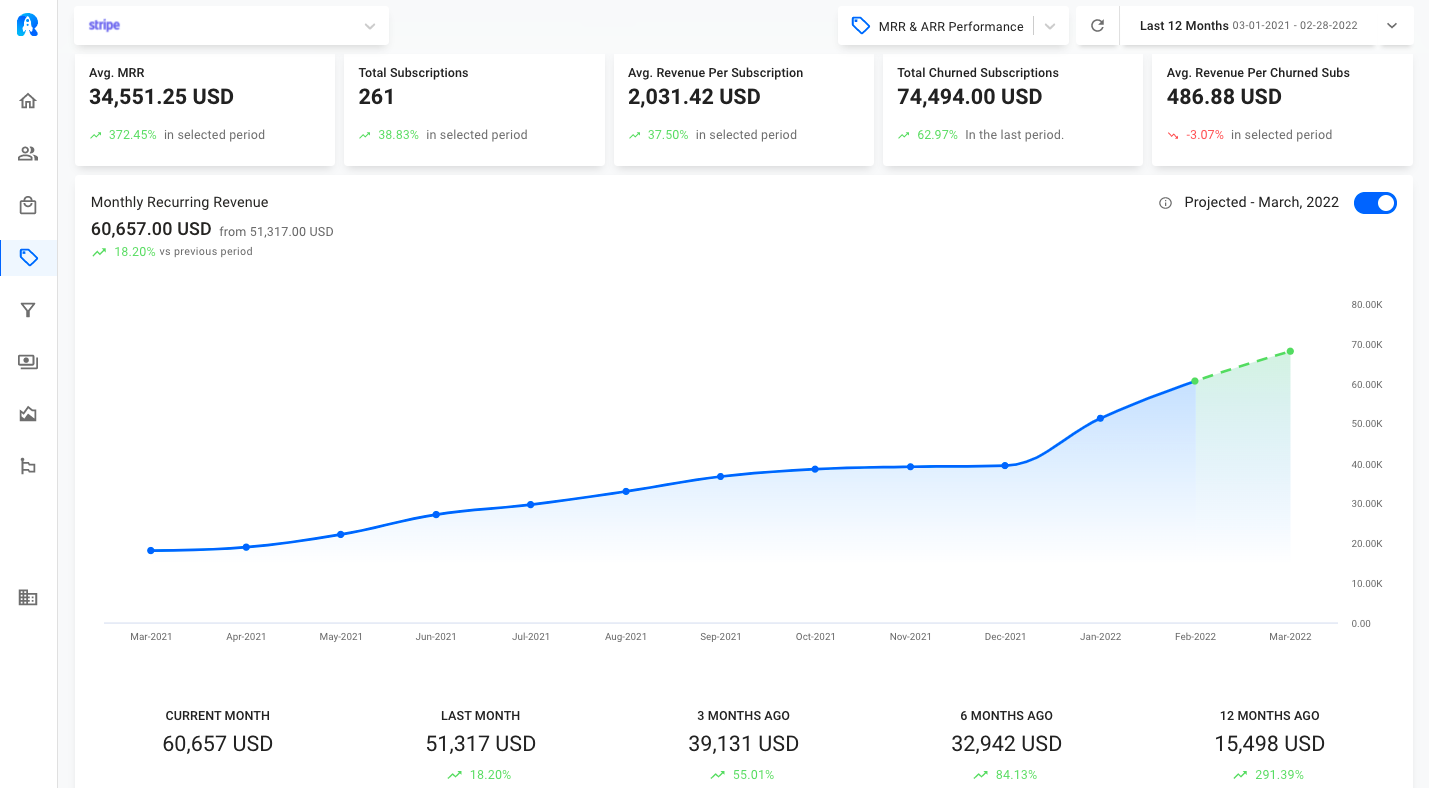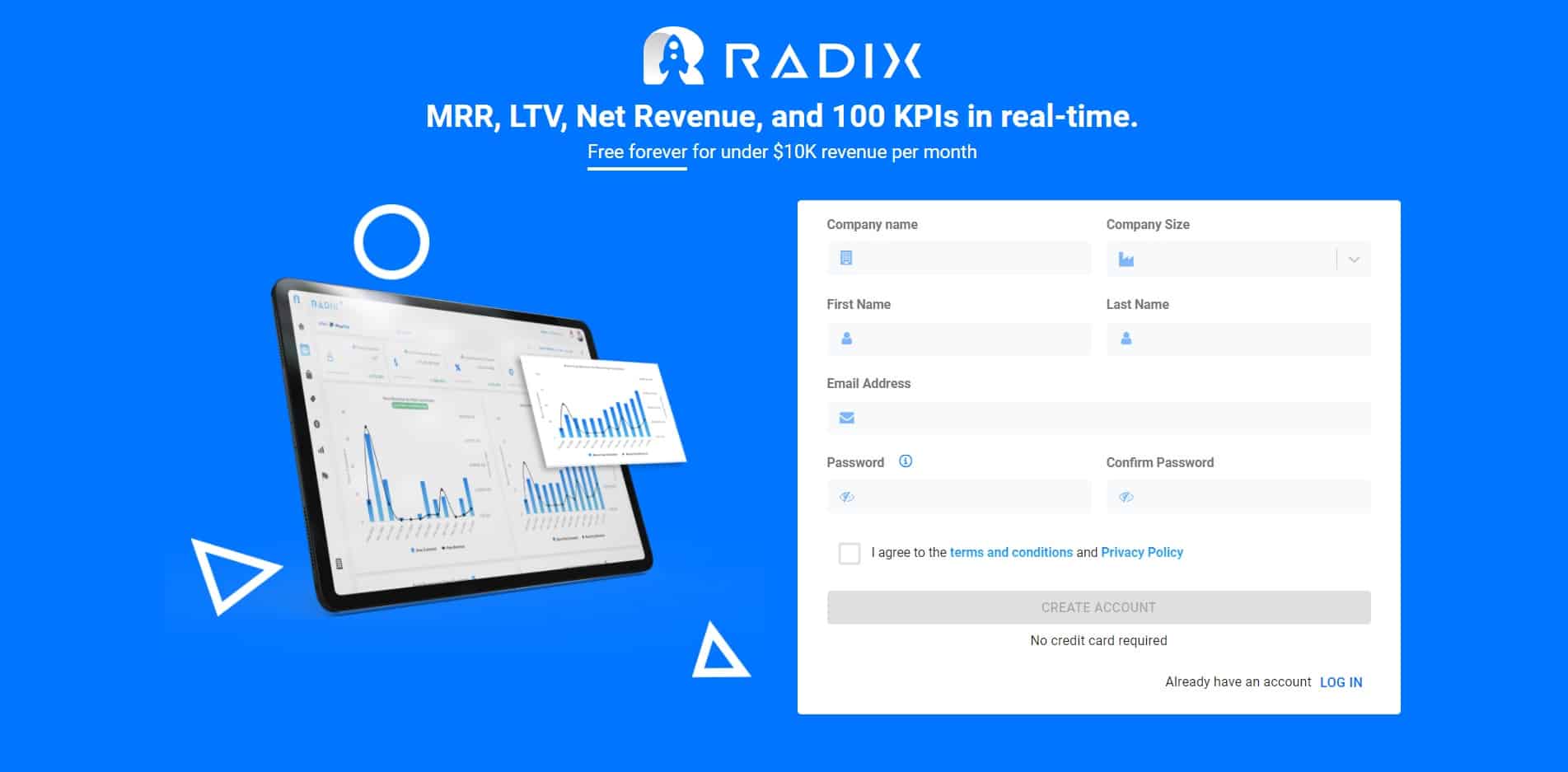Many SaaS companies have a goal of improving their Gross MRR Growth Rate. However, there is another metric that is just as important to growing your company and that is your Net MRR Growth Rate. This article will explain what it is, how companies can improve their Net MRR Growth Rate, and how measuring this key ratio improves different areas of a business.
The net rise or decrease in monthly recurring revenue from one month to the next is referred to as the Net MRR Growth Rate.
Your Monthly Recurring Revenue fluctuates month to month due to new money collected and revenue lost due to churn. This metric is an essential measure for tracking these fluctuations.

Why MRR Growth Rate is Important?
Monthly Recurring Revenue growth rate is a key metric for evaluating the performance of a recurring revenue business. It measures the amount of revenue that an existing customer base generates on an average basis over a given period of time. This key metric also helps to evaluate whether a recurring revenue business can achieve profitability.
MRR Growth takes into account new revenue, expansions, and contractions (downgrading and cancellations). To guarantee total profitability, three essential elements must be addressed: reduce MRR churn, promote upgrades from existing customers, and acquire new paying customers. Net MRR Growth indicates how quickly your SaaS business is expanding.

How to Calculate MRR Growth Rate?
Net MRR = (New MRR + Reactivation MRR + Upgrade MRR) – (Cancellation MRR + Downgrade MRR)
Net MRR Growth Rate = ((Net MRR of Current Month – Net MRR of Last Month) / Net MRR of Last Month)*100
Where,
New MRR: is the extra monthly recurring income generated by new subscriptions obtained during the month.
Reactivation MRR: is the monthly income generated by reactivating previously churned or canceled subscriptions during the month.
Upgrade MRR: is the monthly recurring money produced when subscriptions are transferred from lower-tier plans to higher-tier ones.
Contraction MRR: is the overall decrease in MRR attributable to downgrades and subscription cancellations (or churn) from the preceding month.

For Example,
Assume your net MRR for August is $1000. In February, there was an addition of $900 in new MRR, $500 in current subscription upgrades, and $150 in reactivation MRR. Customer churn, on the other hand, was $400.
- So your Net MRR for September = (900+500+150) – 400 = $1150
- MRR Groth Rate =((1150 – 1000)/1000)*150 = 22.5%
What is a Good MRR Growth Rate?
While there are no official standards for MRR growth rate, there are several principles that SaaS companies at various phases of development can follow. Let’s hear what these experts have to say:
Tomasz Tunguz (Venture Capitalist, Redpoint) says that an MRR growth rate of 15-20% is a reasonably good target for post-Seed/pre-Series A SaaS startups to aim for.
According to Jason Lemkin (Founder, SaaStr), SaaS companies should have the potential to go from $1m- $100m in ARR in 7-10 years. He goes on to say >=20% growth MoM is an outlier, but possible. Most SaaS companies fall under 10-15%.

How to Boost Your MRR Growth Rate
Increasing the number of clients is an apparent strategy to raise your net MRR growth rate (Mr. Obvious). Aside from that, you may do the following to boost it:
-
Experiment with your value proposition to find out what works best for you
Your product’s perceived value and price should be complementary. Experiment with your packaging and pricing to find the sweet spot that works best for your clients to increase your MRR growth.
-
Reduce Churn Rate
The churn rate is the frequency with which your clients terminate their subscriptions.
Increasing your MRR becomes possible when your client acquisition strategy is combined with an effective churn reduction approach.
Begin by determining the source of your churn. Customer churn may be classified into two sorts.
-
Increase Expansion MRR
Expansion Monthly Recurring Income (Expansion MRR) is the additional monthly recurring revenue earned by your current clients month after month. It does not include new MRR earned from new customers.
A boost in expansion revenue adds to MRR growth at a low cost. You may enhance your expansion MRR by doing the following:
- Up-Sells
- Cross-Sells
- Add-On
- Reactivation

How to Track MRR Growth Rate with Radix
- Sign up for free here.
- Connect your Stripe and PayPal accounts in less than five minutes.
- Get access to more than 100 KPIs and 20 smart notifications.
- Get your MRR/ARR/MRR Growth Retention % on the go by downloading our mobile app (App Store and Google Play)
Conclusion
In the end, MRR growth rate is a key metric for your SaaS Company to track. If you are growing by leaps and bounds, your business is doing well. It’s essential that you measure it accurately to determine if you are making the right decisions with your pricing and sales strategies.

Read More:
MRR: What is Monthly Recurring Revenue?
Improve MRR Performance:10 Tips for Improving Your MRR for Better Business Growth
How to Effectively Convert Free Trial Users into Paying Customers in SaaS?





